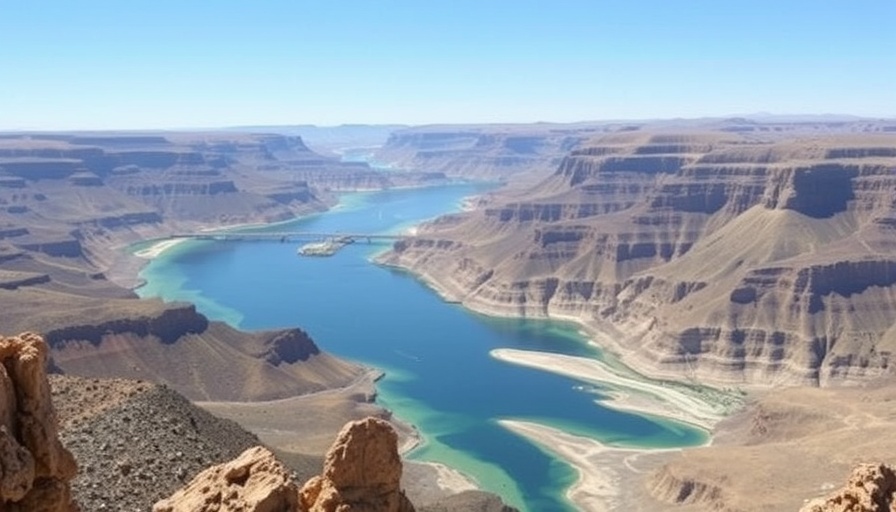
Colorado River Basin: A Water Crisis Unveiled
The Colorado River basin, which services about 40 million people and is instrumental in national agriculture, has faced a perilous reduction in groundwater levels. Recent findings from a NASA study reveal that this crucial river system has lost an alarming 27.8 million acre-feet of groundwater in just 20 years—comparable to the entire capacity of Lake Mead, the largest reservoir in the United States. The study's senior author, hydrologist Jay Famiglietti, emphasized that groundwater is depleting at a rate 2.4 times faster than surface water, highlighting a crisis that could have repercussions across the country.
Understanding Groundwater Loss: The Invisible Threat
Groundwater has often been termed the 'invisible' resource, but as this study shows, its diminishing levels pose significant risks not only to the local environment but also to the national economy. Famiglietti noted that our agricultural reliance on this water source threatens food supplies nationwide, making each loss even more pressing.
Root Causes of Groundwater Overuse
One of the primary factors contributing to the depletion of groundwater is the largely unregulated nature of its extraction. States like California only began managing their groundwater in 2014, while Arizona continues to allow significant unregulated pumping. The emphasis on large-scale industrial farming in the southwest further exacerbates the issue, as more farmers dig deeper wells to meet their water needs. This surge is fueled by crops such as alfalfa, primarily used to feed cows, and the growing water demands of burgeoning data centers.
Future Implications for Property Investors
For homebuyers and property investors in the Dumfries market, the environmental implications of a water-scarce future prompt some critical decision-making. The ongoing water shortages could lead to rising costs and regulatory changes that will affect property values. As water becomes an increasingly scarce commodity, its availability will directly correlate with land desirability and pricing.
Strategies to Prepare for Water Scarcity
Understanding the need for sustainable practices is paramount for potential buyers and investors in the region. From rainwater harvesting systems to landscaping with drought-resistant plants, embracing sustainable solutions can mitigate the impact of water scarcity and maintain property value. Investing in properties equipped with water-efficient fixtures and features can provide both aesthetic and functional advantages in the long run.
The Broader Picture: Aligning with Sustainable Principles
As we face a potential crisis characterized by dwindling water resources, the importance of embracing sustainability extends beyond the realms of policy and agriculture. For local communities, looping in eco-friendly practices can create a resilient network that supports both economic growth and environmental stewardship. This alignment can inspire a thoughtful discourse around how to adapt practices within home design and property development to become more sustainable.
In the end, the sustainability of the Colorado River basin isn't just an issue for environmentalists. Its repercussions will ripple across society, affecting markets and living standards. With judicious planning and a commitment to sustainable practices, homebuyers and investors can both contribute to and benefit from a water-secure future.
As awareness grows around these issues, it’s essential for all stakeholders including homeowners, farmers, and local governments to coordinate efforts towards more responsible water usage.
 Add Row
Add Row  Add
Add 





 Add Row
Add Row  Add
Add 








Write A Comment